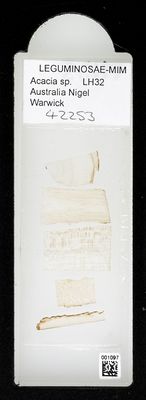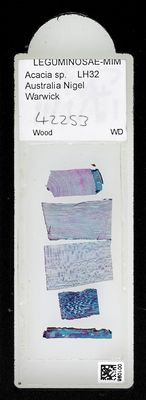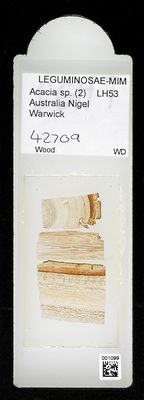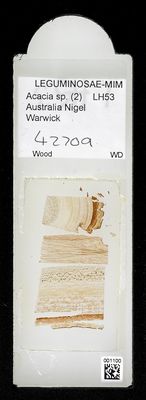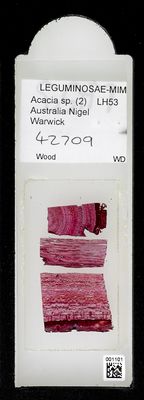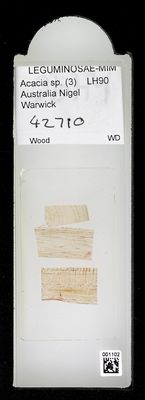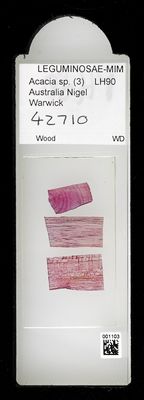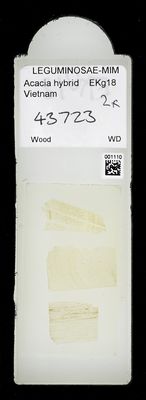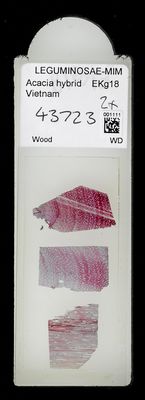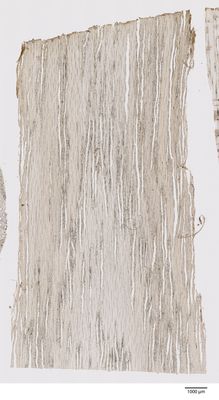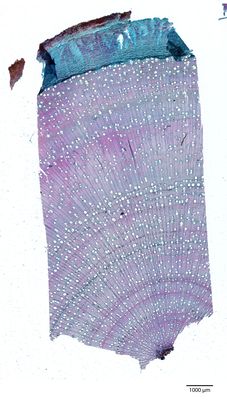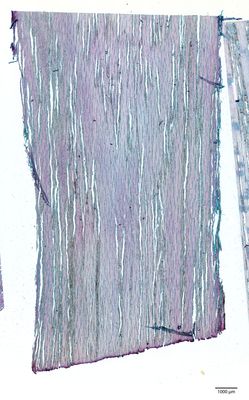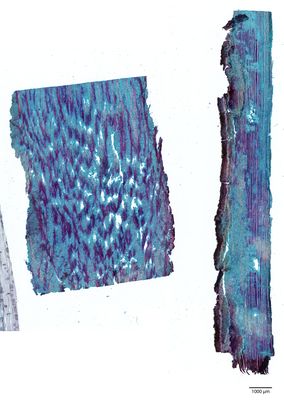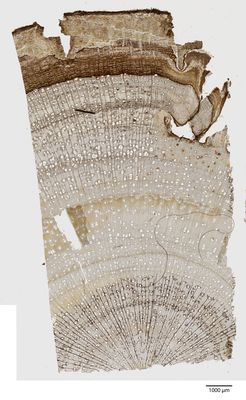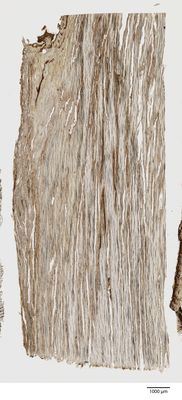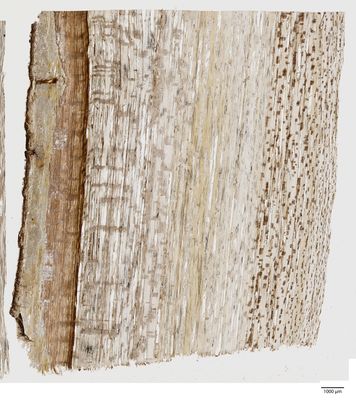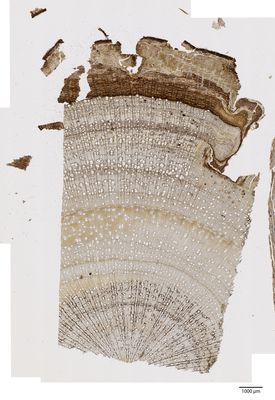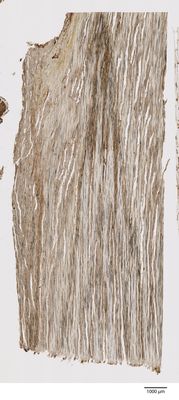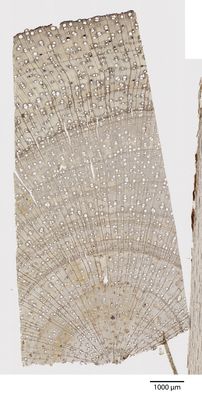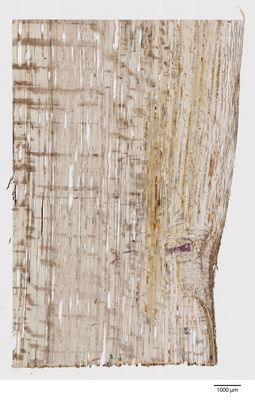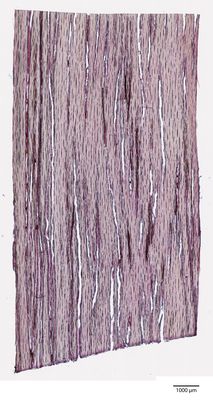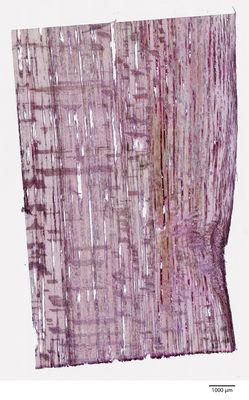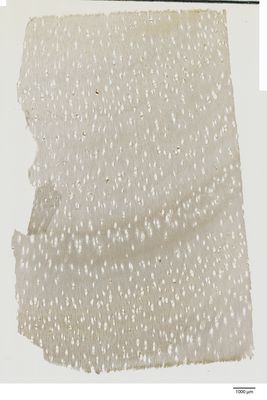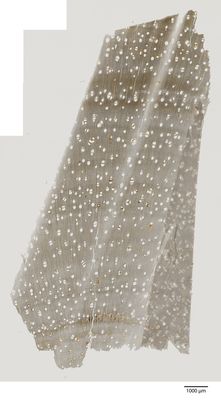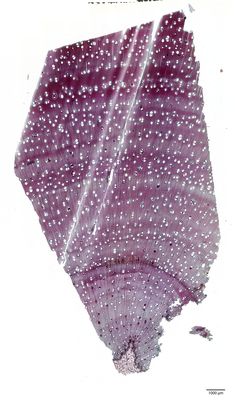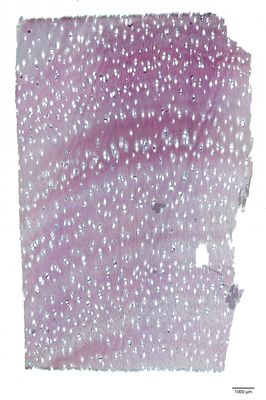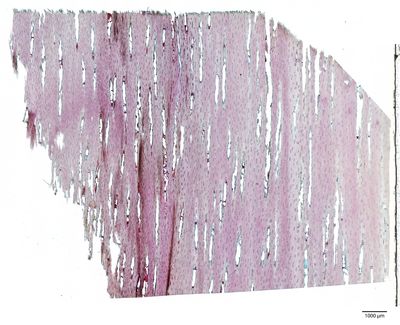Legumes of the World. Edited by G. Lewis, B. Schrire, B. MacKinder & M. Lock. Royal Botanic Gardens, Kew. (2005)
-
Note
-
Tribe Acacieae is widely attributed to Bentham (1842), e.g., Vassal (1981) and Maslin et al. (2001), but Reveal (1997) gives Dumortier (1829) as the first place of publication of the tribe and this is confirmed by Brummitt (pers. comm., 2004). The genus Faidherbia A.Chev. was included in the Acacieae by Vassal (1981), and is still retained as part of the tribe by Maslin et al. (2003). The tribal position of Faidherbia remains equivocal, although Lewis & Rico Arce (this volume) place the genus in tribe Ingeae following Polhill (1994) and Luckow et al. (2003) rendering the Acacieae monogeneric, with the single genus Acacia. The taxonomic status of Acacia and its relationship to other mimosoid genera is, however, as yet unresolved. At present three subgenera are recognised within Acacia sens. lat.: Acacia, Aculeiferum and Phyllodineae. Pedley (1986) proposed that these three subgenera be given generic rank, namely Acacia, Senegalia Raf. and Racosperma Mart., respectively, but this was not widely adopted, although the debate surrounding these suggested nomenclatural changes continues. Pedley (2003) has recently published combinations (several hundred of which are new) in Racosperma for all Australian phyllodinous acacias. What is clear is that the genus Acacia, as currently circumscribed, is not monophyletic (Maslin et al., 2003; Miller & Bayer, 2003; Miller et al., 2003), and at least five genera should be resurrected or newly described from within it in due course. The five genera correspond to those recognised by Pedley except that Senegalia sens. lat. is regarded as comprising three genera: Senegalia sens. strict., Acaciella Britton & Rose (synonym Acacia subgenus Aculeiferum section Filicinae (Benth.) Taub.), and an undescribed genus based on Acacia coulteri Benth. and a small group of related species. Acacia subgenus Acacia appears more closely related to tribe Mimoseae and subgenus Phyllodineae nests within the Ingeae in most recent studies (Luckow et al., 2003). While these two taxa are not moved out of the Acacieae in this treatment, this seems a likely future consequence of recent research. Removal of Acacia sens. strict. from the Acacieae would leave the tribe without its type genus so that Acacieae could then no longer be retained. It is not appropriate here to reinstate, change or describe new generic names, especially as application of the names Acacia and Racosperma are currently under review (Maslin et al. 2003, Orchard & Maslin, 2003; Luckow et al., submitted b). A proposal to retypify Acacia based on an Australian taxon (Orchard & Maslin, 2003) has recently been passed by the Committee for Spermatophyta but this decision awaits ratification. The present treatment of the Acacieae thus recognises a single genus containing c. 1450 species (Fig. 26).
-
Vernacular
-
florists' mimosa
-
Habit
-
Armed or unarmed trees, shrubs and lianas
-
Ecology
-
Wide ranging in habitat, from rain forest to alpine communities, dominant shrubs and trees in seasonally dry tropical and subtropical bushland, woodland, wooded grassland, coastal dunes and deserts
-
Distribution
-
Acacia sens. strict. (syn.: Acacia subg. Acacia; Vachellia), c. 161 spp., pantropical (73 in Africa and Madagascar of which c. 15 extend to Asia, 21 restricted to Asia, 7 in Australia and the Pacific; c. 60 spp. in the New World, of which c. 35 in N and C America and c. 25 in S America); Senegalia (syn.: Acacia subg. Aculeiferum sens.strict.), c. 207 spp., pantropical (69 in Africa and Madagascar, of which 7 extend to Asia, 36 restricted to Asia, 2 in Australia and the Pacific [1 extending to Asia]; c. 100 New World of which c. 40 in N and C America, c. 60 in S. America); Acaciella (syn.: Acacia subg. Aculeiferum sect. Filicinae), 15 spp. restricted to the Neotropics (mainly Mexico and C America but extending thinly to S America); Gen nov. (the 'Acacia coulteri' group), 13 spp. restricted to N and C America; 'Racosperma' (syn.: Acacia subg. Phyllodineae), c. 1045 spp. in Australia (of which 941 endemic and 7 extending to Asia, and c. 100 spp. new and yet to be described fide Maslin et al., 2003), 7 in the Pacific, 3 confined to Asia, 2 in Madagascar and the Mascarenes



